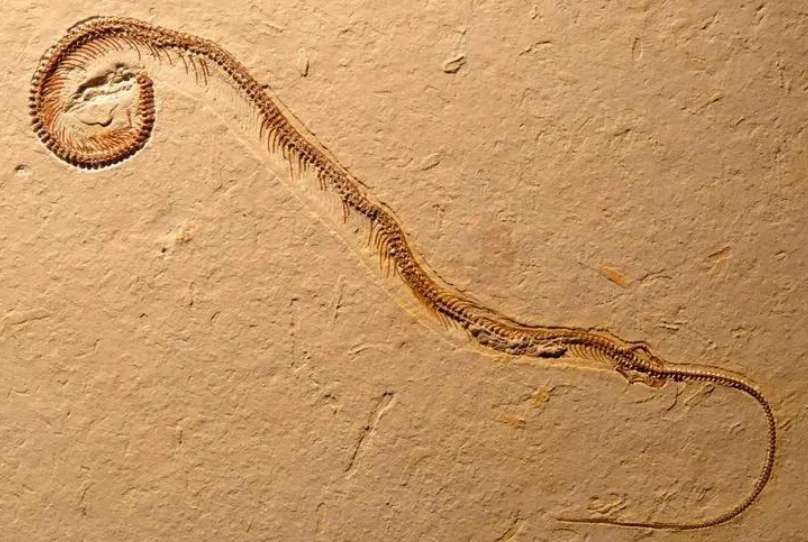The fastest "running" snake in the world is the desert rattlesnake. It can "run" at a speed of 29 kilometers per hour, which is equivalent to running 8 meters in one second. Although this speed is not as fast as the world sprint champion, it can It is enough to kill most people instantly. The most important thing is that snakes have no legs, and their speed depends entirely on their bodies.

So, why can snakes run without legs? "Woolen cloth? Let’s talk about this interesting issue together.
Snake is an ancient reptile. Judging from the fossils that have been discovered so far, the earliest snake appeared about 167 million years ago. At this time, the ancestors of snakes had limbs. It was not until about 90 million years ago that snakes evolved their limbs and became legless reptiles. This means that it took snakes nearly 70 million years to degenerate their limbs.
So, why do snakes lose their limbs? Or why do snakes with degenerated limbs survive to this day? Let’s talk about this interesting question first.
The degeneration of the original snake's limbs must be the result of genetic mutation. As for why this genetic mutation occurs, the answer is simple: I don't know, because genetic mutation itself is disordered. It is uncontrollable, and this is easy to understand. If animals could control the direction of their own genetic mutations, then the animals would have everything they want.
In the snake genome, a genetic mutation related to limb growth occurred, which led to the degeneration of limbs in some snakes. Through the accumulation of generations, this feature becomes more and more obvious, and eventually disappears completely. In this case, degenerate limbs must be of great benefit to the survival of snakes. Otherwise, this genetic mutation cannot be retained by natural selection. Therefore, we Let’s take a look at the benefits of degenerating limbs to the survival of snakes.
First of all, the earliest ancestors of snakes were a type of cave-dwelling lizards. They were cave lizards that lived in the Cretaceous. The cave lizard was a small reptile. When the gene mutation that degenerated limbs appeared, Compared with other cave lizards, those cave lizards with this gene mutation can more easily get into caves when encountering danger. Moreover, the gradual disappearance of limbs has made some cave lizards' caves smaller and their safety greatly improved. , which is beneficial to survival.

Secondly, snakes are widely distributed in the world, especially in tropical areas, such as desert areas, which have four limbs. For animals without limbs, it is easier to walk in the desert, because once there are limbs, the body's strength is pressed on the four legs and it is easy to sink into the sand, and the entire body is close to the ground, allowing reptiles to survive better.< /p>
Thirdly, without limbs, snakes’ hiding abilities are further improved. They stay close to the ground in dense grass and are very difficult to find. This will bring two benefits: they are less likely to be spotted by natural enemies. It is easier to find and hunt. And when moving, without limbs, snakes are easier to move in some complex and small spaces, which further improves survivability.
In short, the degeneration of snake limbs is a A complex process involving the interaction of genes, environment and adaptability. In the long process of evolution, snakes with no limbs or smaller limbs gradually became more advantageous for survival and passed this feature on to their descendants through inheritance. generation. Eventually, the snake's limbs gradually degenerate and eventually disappear.

After degenerating their limbs, snakes are not limited to living on land. They can also move freely in different environments such as trees and water. The living environment has further expanded. Although there are no legs, snakes can walk in many ways. Let’s introduce the snake’s walking methods and their principles in detail.
The body structure of snakes is different from other Reptiles are very different, they have no limbs, but they have a long, scale-covered body. Inside the snake's body, there are pairs of ribs that are not connected to the sternum, but are connected to the sternum. On the spine, this structure allows the snake's body to bend and twist freely.
The surface of the snake's body is covered with a layer of scales, which are made of horny and can protect the snake's body. In addition, in There are some special scales on the snake's abdomen, called "belt plates".
The snake's walking mainly relies on the swing of the body and the friction of the belly plate. When one side of the snake's body pushes forward, it The other side of the body will move backward. In the process, the snake's body will bend like a wave. This bending method can make the snake's body form a relative angle with the ground, thereby increasing friction.
The snake's belly is alsoIt is one of the important factors to propel the body. When the snake's body slides forward, its belly plate will be in close contact with the ground, creating friction that can push the snake's body forward.
In addition, the snake's body can also adjust its walking method according to the terrain. For example, when a snake encounters a large obstacle, it will use a jumping walking method to jump over the obstacle by bouncing its body. Therefore, the walking principle of snakes is actually accomplished by the cooperation of muscles, bones and abdomen.
It took the ancestors of snakes 26 evolutions and nearly 70 million years to degenerate their limbs. Since the degeneration of limbs, snakes have been "cheating" all the way and can survive tenaciously in various environments. , and compared with when they had legs, snakes' flexibility, concealment, hunting ability, and living environment have also been improved and changed, which has allowed them to successfully escape one extinction event after another and survive to this day.